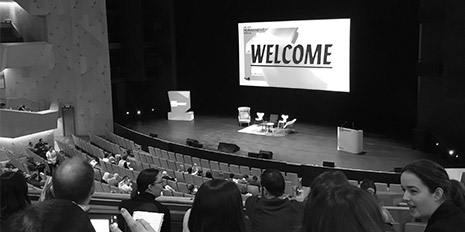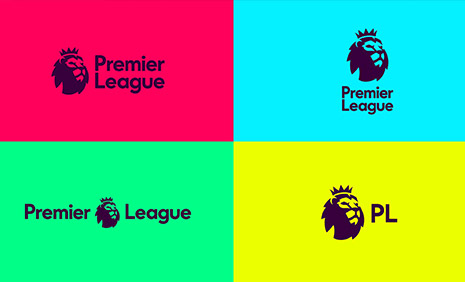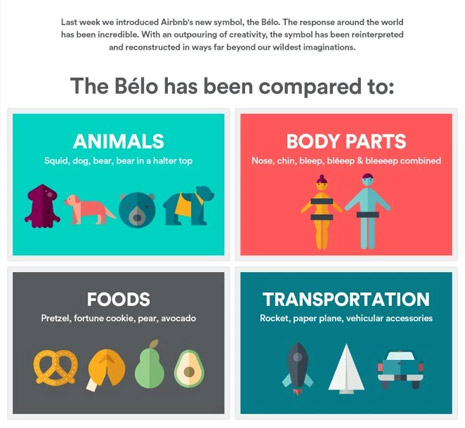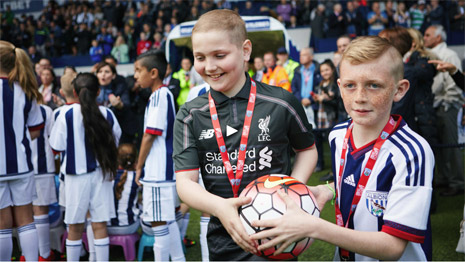
Semi Permanent is always a great excuse to get out the office, grab a goodie bag, catch up with the NZ design community, and get your brain melted with inspiration overload.
Paul Stafford from London's' DesignStudio was the first talk of the event and gave us an impressive presentation, combining amazing creative execution, storytelling, and critical analysis of the design and business landscape.
DesignStudio boasts an impressive portfolio of work and are the agency most recently responsible for the AirBnb and Premier League re-brands.
With such high profile clients, there is always going to be a vocal group that disagrees with the outcome, but Paul took us on their rebranding journey. He not only showed us that their outcome was the right one (of course) but showcased a great example of research-driven, creative process.
The logo is the full stop at the end of a long story
The breadth and depth of research that went into the rebranding of the Premier league was fascinating and crucial to the success of the project.
Design Studio talked to some 2,000 fans to ensure they were telling the right story. They found that 90% of people associated the lion with the Premier League and that it was integral to the history of the League. It was important to retain the icon in any new brand going forward.
This drove a long research and development process, understanding the story of the lion and going through many iterations to create the right mark. The disconnect with this, however, is that the extensive background research is impossible to see in the moment you launch the brand. The logo tells 1% of total work you have done. You have to trust in the work and trust in the story you tell. This then led to Paul posing the question:
How should we give and respond to feedback?
When launching a re-brand, big companies with big audiences will always face vocal outcries of "What the F*ck is that?! My 5-year-old niece could design a better logo job in MS Paint!" But when a logo is such a small representation of the greater design process, how should the market respond and how do you educate the market on your decisions?

Paul was critical of the general media landscape when it came to judging rebrands on their face value. The Guardian asked readers to design their own Premier league logo on the back of some initial backlash to the new brand, but is this how the media should respond?
Although some of the designs were light-hearted, ultimately this kind of reporting devalues the creative effort, insights, and research. Ultimately, it devalues the industry as a whole and paints a poor understanding of the creative process.
One clever response to some vocal negative feedback was AirBnB's Belo Report. The report compiled all the negative spin on the logo work that had been created in the first week and turned it into an asset for AirBnB. A clever way to embrace the feedback and say, "Hey guys, thanks for all the amazing feedback and we love what you've done with our logo, but we think we like it just the way it is."

Ultimately, new brands need time. Changing your work based on backlash does a huge disservice to your work and shows you do not trust in your process and insights. Ultimately, brands need time to live and breathe out in the wild. The backlash will fade and your brand will stay standing.
Ever expanding media
From billboards to buses, uniforms, match day balls, websites, and TV spots, DesignStudio had to ensure the Premier League mark was adaptable to a huge array of media. They undertook testing on every medium to ensure that the mark was producible and vied for fans' attention. For merchandise, the team worked closely with a counterfeit specialist to protect the mark to ensure fans that they were buying legitimate goods.
The logo also had to live and breathe on TV. The DesignStudio team adapted the brand and developed interactive motion graphics, resulting in awesome TV adverts and other promotional material. This meant that the mark not only had to live on its own but become part of the Premier League's new digital experience.
With the amount of ways we can access content expanding by the day, design agencies need to ensure they can adapt marks and brand material for many different applications. This means engaging with manufacturers and stakeholders to ensure your mark gets the quality of reproduction it deserves.
Shifting Perceptions
DesignStudio's goal with any rebranding project is to shift the audience's perception; this certainly rang true with the Premier League. The Premier League had spent many years saying the same story to all their different audiences. They had a dedicated fan base but messy visual identity and an ethos that was missing an opportunity to truly engage with their core fan base.
They stripped this back and had to assess: what stories are we going to tell? The perception had to shift from a league for rich players and sponsorship to a league that cared for everyone. The result: a brand that’s not just about football, but is about the fans, the families, and the kit washers.
Paul summed this up nicely with the phrase, "We used to talk about the pitches we built; now we talk about the lives that have been changed on them." This was no better shown in a small clip created by the DesignStudio team on football fans Myles and Archie -- check it out.

DesignStudio made it clear that the same amount of effort had to be put into telling the fan's stories as was put into broadcasting the games, with the Premier League's new website now showing a 50/50 split between sports news and community content.
Paul Stafford's talk was the perfect kick-off to two days filled with inspiration. He presented a great cross-section of creative content and critical analysis of the design industry. The heart of Pauls talk, however, came back to a theme that we all know and try to emulate in all our work in the creative industries. The final product at the end of the line is important, but it’s the stories you wrap around that product that will bring it to life and make it real for fans and consumers. Trust in your work, trust in your research, and believe in the stories you tell.
Comments
Post new comment